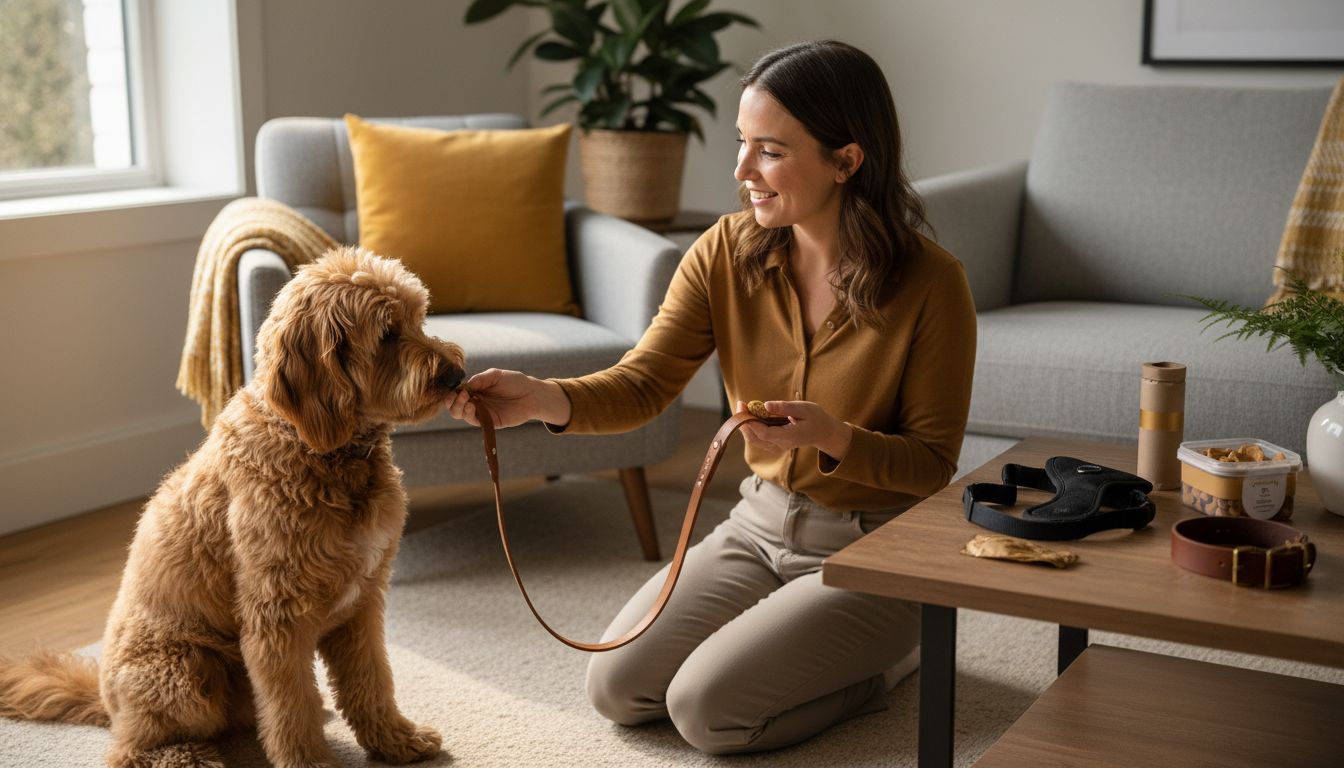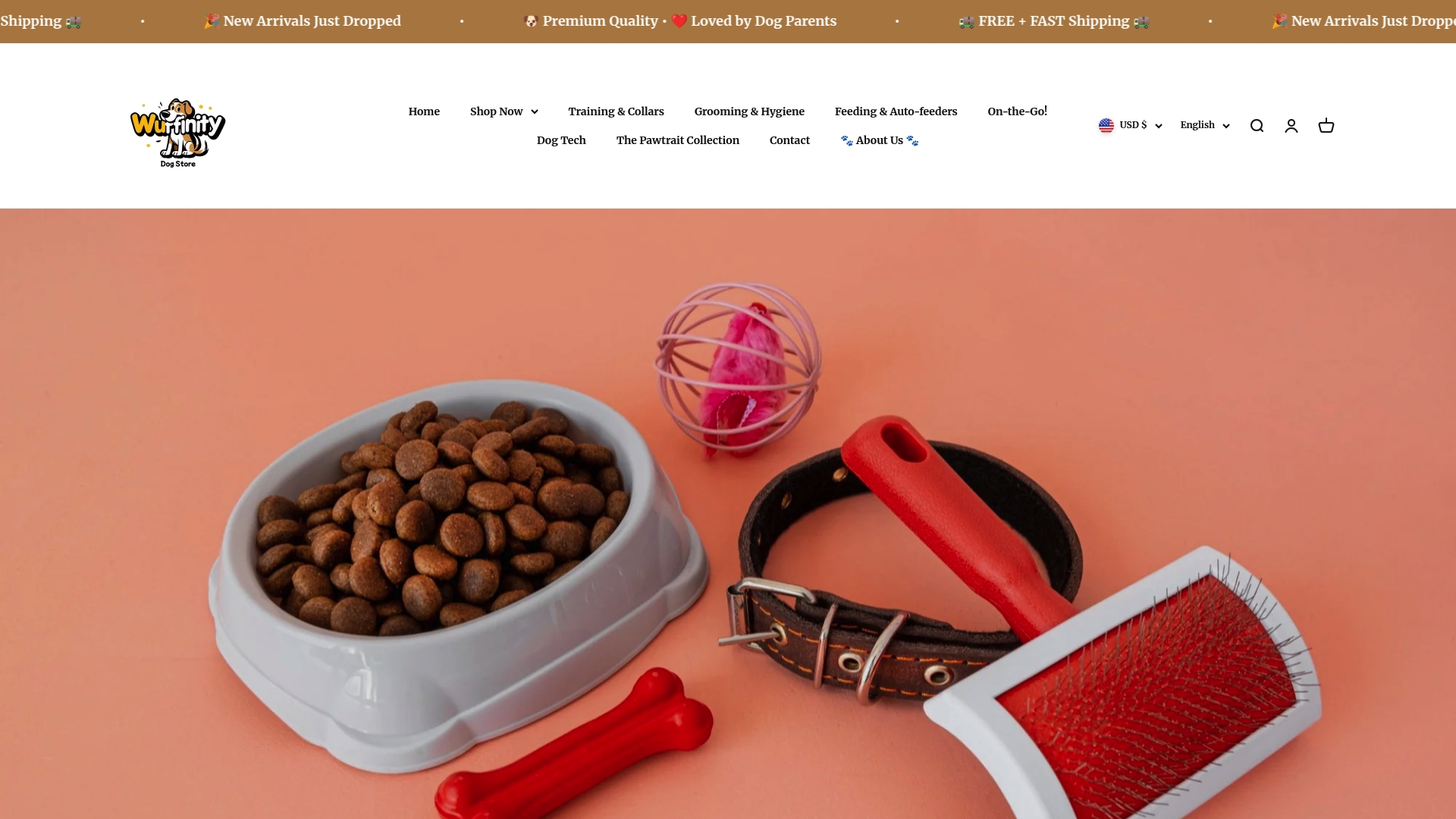Most dogs are not born knowing how to walk politely on a leash, and over 60 percent of pet owners struggle with leash pulling or unruly walks. Without the right approach, leash training can feel frustrating for both you and your dog. Learning how to guide your pet step by step builds trust, safety, and lifelong good habits. Discover practical tips that set up both you and your pup for smoother strolls, fewer battles, and happier walks together.
Table of Contents
- Step 1: Prepare Essential Gear for Leash Training
- Step 2: Set Positive Associations with the Leash
- Step 3: Teach Basic Leash Walking Indoors
- Step 4: Transition Training to Outdoor Environments
- Step 5: Verify Progress and Reinforce Good Behavior
Quick Summary
| Key Point | Explanation |
|---|---|
| 1. Gather essential gear before training. | Use a 6-foot leather leash and a comfortable buckle collar to initiate effective leash training sessions. |
| 2. Create positive associations with the leash. | Use treats and praise to help your dog view the leash as a source of good experiences, making training enjoyable. |
| 3. Practice leash walking indoors first. | Start training in a quiet space to establish basic behaviors and commands before moving to more complex environments. |
| 4. Gradually transition to outdoor training. | Slowly introduce outdoor distractions, maintaining focus on calm behavior and reinforcing learned skills. |
| 5. Track progress and reinforce good behavior. | Keep a training journal to monitor improvements and use positive reinforcement techniques for continued success. |
Step 1: Prepare Essential Gear for Leash Training
Successful leash training starts with having the right equipment. Before you begin your training journey, gathering the proper gear will set you and your dog up for a smooth, positive experience.
According to canr.msu.edu, you’ll want to collect several key items. The foundation of your leash training toolkit is a 6-foot leather leash, which provides the ideal length and control for training sessions. Pair this with a well-fitted buckle collar that sits comfortably around your dog’s neck without being too tight or loose.
The National Animal Health Foundation recommends additional essential supplies. Always bring dog waste bags to clean up after your pup during training walks. Consider investing in a comfortable dog harness as an alternative to a traditional collar, which can provide better control and reduce strain on your dog’s neck.
Pro Tip: Avoid retractable leashes during training. They can confuse dogs by constantly creating tension and undermining your training efforts.
Once you’ve gathered your gear, you’re ready to move on to the next step in creating calm and confident walking experiences with your furry companion.
Step 2: Set Positive Associations with the Leash
Creating a positive emotional connection between your dog and the leash is crucial for successful training. Your goal is to help your dog view the leash as something exciting and rewarding rather than restrictive or stressful.
Iowa State University Extension recommends a strategic approach to building these positive associations. Start by bringing your dog to training sessions when they are slightly hungry and have their favorite treats ready. Choose small, soft treats that your dog rarely gets to make the experience extra special.
Begin by showing the leash and immediately offering a treat. Let your dog sniff the leash while giving praise and rewards. Practice attaching and detaching the leash multiple times, each time following up with treats and enthusiastic verbal praise. This method helps your dog understand that the leash means good things are about to happen.
Pro Tip: Keep training sessions short and fun. If your dog starts showing signs of stress, stop and try again later.
By consistently linking the leash with positive experiences, you will gradually transform your dog’s perception from apprehension to anticipation. Your next step is to practice walking with your newly leash friendly companion.
Step 3: Teach Basic Leash Walking Indoors
Indoor leash training is an essential first step in developing your dog’s walking skills. This controlled environment allows you to establish foundational behaviors before moving to more challenging outdoor settings.
The National Animal Health Foundation recommends starting with a hands-free lead setup that gives you flexibility while keeping your dog attached. Begin by practicing in a quiet room with minimal distractions. Hold the leash loosely and encourage your dog to walk beside you using treats and gentle verbal encouragement.
The Animal Care’s Complete Dog Leash Training emphasizes understanding proper leash holding techniques and reading your dog’s body language. Focus on teaching your dog to heel by your side. When your dog moves forward or pulls, stop walking immediately. Only resume movement when the leash is slack and your dog is paying attention to you.
Pro Tip: Keep initial training sessions short around 10 to 15 minutes to prevent frustration and maintain your dog’s interest.
Practice these indoor walking skills consistently, and you will build a strong foundation for confident outdoor walks.
 Your next step is to gradually introduce more challenging environments and distractions.
Your next step is to gradually introduce more challenging environments and distractions.
Step 4: Transition Training to Outdoor Environments
Moving your leash training from indoor spaces to outdoor environments requires patience and strategic planning. Your goal is to gradually expose your dog to new stimuli while maintaining the calm walking behaviors you have established indoors.
PubMed research highlights the complexity of public area interactions during dog walks. Start by choosing a quiet outdoor location with minimal distractions. Begin with short walks, keeping initial sessions brief and focusing on reinforcing the skills your dog has learned inside. Watch for signs of overstimulation and be prepared to redirect your dog’s attention using treats and verbal praise.
Additional PubMed research underscores the importance of understanding your dog’s individual behavioral responses during leash walks. Gradually increase the complexity of your walking environments by introducing more distractions. If your dog becomes reactive or pulls, stop moving and wait until they return to a calm state before continuing.
Pro Tip: Always carry high value treats and maintain a confident but relaxed demeanor to help your dog feel secure in new environments.
Consistent practice and positive reinforcement will help your dog become a confident and well behaved walking companion. Your next step is to refine and maintain these skills through regular practice.
Step 5: Verify Progress and Reinforce Good Behavior
Tracking and reinforcing your dog’s leash walking progress is crucial for long term success. Your goal is to consistently acknowledge and reward good behavior while identifying areas that need further improvement.
PubMed research highlights the significant role handlers play in shaping dog behavior during leash training. Create a simple tracking system to monitor your dog’s walking skills. Keep a training journal noting improvements such as reduced pulling, better focus, and increased responsiveness to commands. Celebrate small victories and use positive reinforcement techniques like treats, praise, and brief play sessions to encourage continued good behavior.
Research from Frontiers in Veterinary Science suggests that equipment choice can significantly impact leash walking performance. Consider experimenting with different harness types if you notice persistent pulling or discomfort. Pay attention to your dog’s body language and adjust your training approach accordingly. Some dogs may require more patience and consistent practice to master leash walking skills.
Pro Tip: Conduct weekly mini assessments to track progress and identify any regression in walking behaviors.
Consistent evaluation and positive reinforcement will help transform your dog into a confident and well behaved walking companion.
 Remember that patience and persistence are key to successful leash training.
Remember that patience and persistence are key to successful leash training.
Gear Up for Calm and Confident Walks with Wuffinity
Leash training can be a challenging journey as you work to create positive associations, teach basic walking skills indoors, and transition confidently to outdoor environments. If you want to overcome common struggles like pulling, reactivity, or discomfort, having the right training tools, comfortable collars, and quality leashes is essential. Wuffinity offers a curated selection of dog accessories designed specifically to support each step of your leash training workflow.

Start building calm and confident walks today by exploring our collection of dog training gear tailored to enhance comfort and control. Don’t wait until frustration sets in. Visit Wuffinity.store now and find the perfect products to reinforce good behavior, keep walks enjoyable, and help your furry friend thrive.
Frequently Asked Questions
What essential gear do I need for leash training?
To start leash training, you’ll need a 6-foot leather leash and a well-fitted buckle collar. Consider adding a comfortable dog harness for better control, and always have dog waste bags handy for cleanup during training walks.
How can I create positive associations with the leash for my dog?
Help your dog view the leash as a positive thing by associating it with treats and praise. Begin by showing the leash and immediately offering a treat, repeating this process several times to foster excitement around the leash.
What are the best practices for teaching my dog to walk on a leash indoors?
Start with short, 10 to 15-minute sessions in a quiet room and hold the leash loosely. Encourage your dog to walk beside you and only resume movement when the leash is slack, reinforcing good behavior with treats and verbal praise.
How do I transition leash training to outdoor environments?
Begin outdoor training in quiet locations with minimal distractions and keep the initial sessions brief. Gradually expose your dog to new stimuli and use treats to redirect their attention if they become overstimulated.
How can I track my dog’s progress in leash training?
Create a simple training journal to note improvements such as reduced pulling and better focus. Conduct weekly mini assessments to celebrate milestones and to identify areas needing more practice.
What should I do if my dog continues to pull on the leash?
If your dog is still pulling, consider experimenting with different types of harnesses to find one that suits them. Adjust your training by consistently reinforcing good behavior with praise and treats whenever they walk calmly beside you.






0 commentaire